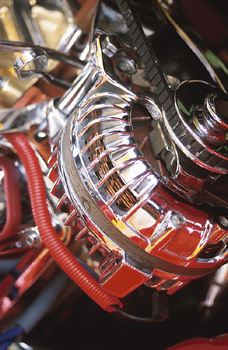How to Replace a Timing Belt
Learning how to replace a timing belt is a tricky prospect. A vehicle’s timing belt is crucial to the efficient operation of the engine. Be sure to change your timing belt in accordance with your automotive manufacturer’s recommendations, or when your belts begin to show signs of wear.
Timing belts control your camshaft, which operates the intake and exhaust valves in your engine. Without a functioning timing belt, your engine can’t run. If the timing of your engine is off, it wreaks havoc with that engine.
While it’s tempting to learn how to replace a timing belt yourself to save some money, replacing a timing belt is a difficult and time consuming endeavor. The average car driver doesn’t have a sufficient selection of tools to streamline the procedure, which increases the difficulty as well.
Therefore, take your vehicle to a certified mechanic who knows how to replace a timing belt, since this is the best way to ensure the job gets done quickly and correctly. People who want to take their vehicle to a certified mechanic for whatever reason, this article is intended to be used as an overview of the steps involved in changing a timing belt yourself, and not to serve as a set of definitive step by step instructions.
Timing Belt Replacement
Before you begin, it is crucial that you purchase an official automotive repair manual that specifically deals with your vehicle’s particular make, model and year. Also, all home repairs should be inspected by a mechanic for safety purposes. You should also consult a mechanic if any point during this timing belt replacement guide you feel unsure about what you’re doing.
Step 1
Put your vehicle on a secure automotive hoist. Make sure the engine is supported. Your automotive repair guide should cover this. Drain the coolant out of your radiator.
Make sure to allow the engine to cool off overnight, to prevent being scalded with pressurized coolant. Make sure that you empty the coolant from your radiator into an appropriate container and properly dispose of it. Put it back into your radiator towards the end of the procedure, if the coolant is still good.
If needed, remove the entire radiator and cooling fan assembly. This is not always required, it depends on the make and model of the vehicle. Consult your automotive repair manual for details on whether or not this needs to be done.
When removing your timing belt, you might have to remove your A/C belt as well. Check the manual for this information.
Step 2

How to Replace a Timing Belt
Once the radiator is removed, remove the valve cover. Take out the spark plugs and disconnect the ignition wires in your engine. Loosen the bolts on the water pump, then remove the belt, before taking the actual pump out.
Loosen the bolts on the alternator and remove the water pump pulley and accessory belt pulley.
Step 3
Take off the timing belt covers, so you can get at the timing belt itself. There might be more steps involved prior to this point, so once again refer back to your automotive repair manual.
Make sure that your transmission is in neutral. Rotate the crankshaft pulley, until the E and I markings line up. Loosen the tensioner lock bolt and remove the timing belt.
Step 4
Consider changing your water pump, while you have this part of the engine apart. Look at the various seals, to see if they need to be replaced as a result of everyday wear and tear.
Consult your automotive repair manual for a list of water pump parts, or ask your mechanic.
Step 5
The steps required to reassemble your timing belt vary by the make, model and year of your vehicle. Look to your automotive repair manual for specifics. However, the process involves first replacing the inner guides of the timing belt, then the covers, while making sure to apply sealant where needed.
Ensure that the outer guide plate and crankshaft assembly get put back on. Following this, the ignition wires, coolant system and various other components get put back together. Make sure to refill your radiator with coolant as well.
Once everything is back in place, it’s a good idea to have a mechanic inspect your work, to make sure everything is put back together correctly. Even if you know how to replace a timing belt, it’s a good idea to have a trained eye double-check your work.
